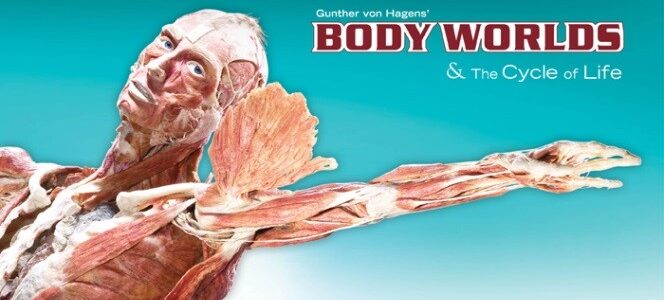
New Blockbuster BODY WORLDS Exhibition Arrives at HMNS
New special exhibition focuses on the human body from birth to old age
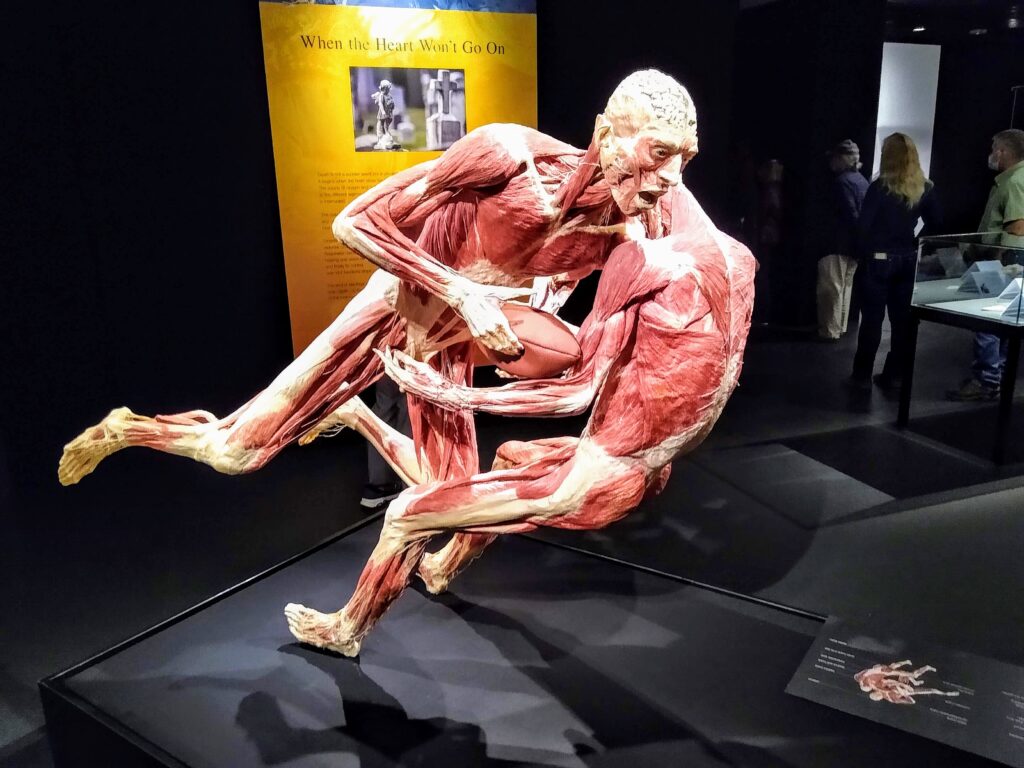
Gunther von Hagens’ BODY WORLDS & The Cycle of Life opened at the Houston Museum of Natural Science on October 17.
BODY WORLDS & The Cycle of Life, a new special exhibition, delivers a breathtaking encounter with the inner workings of the human body and shows the effects of poor health, good health and lifestyle choices.
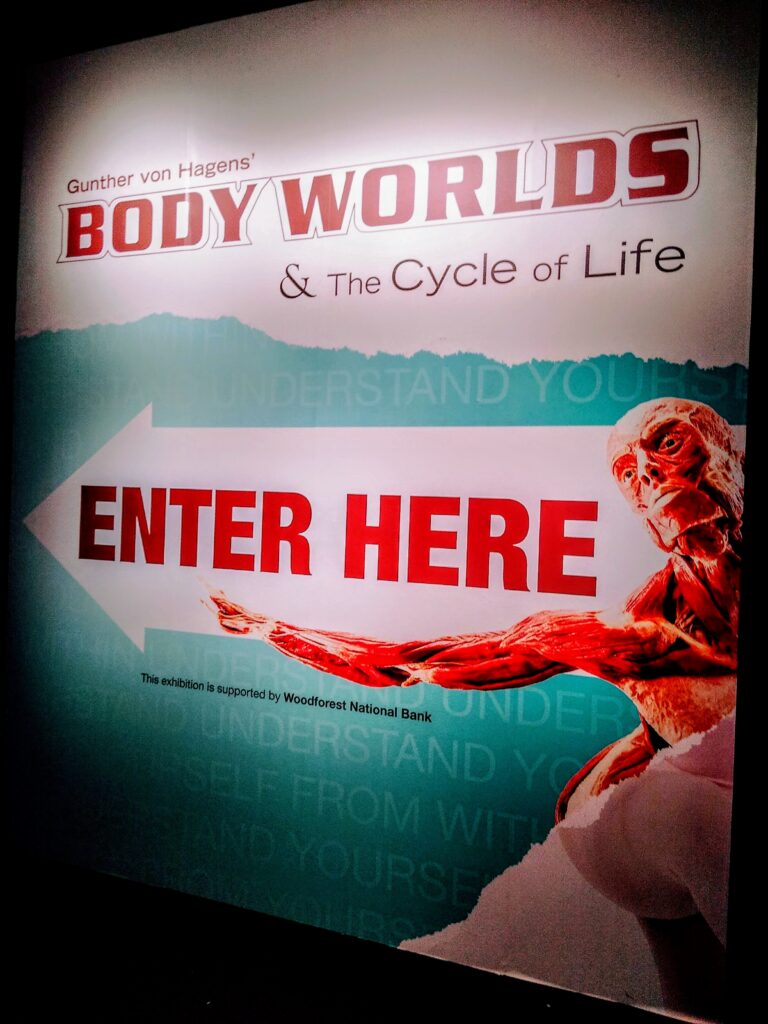
In addition to showcasing the wonders of human development, the 100+ preserved human specimens – including whole-body plastinates – demonstrate the complexity, resilience and vulnerability of the human body in distress, disease and optimal health.
In the exhibition, designed by BODY WORLDS’ creative and conceptual designer, Dr. Angelina Whalley, visitors follow the human body through the span of time and learn about the latest findings in anatomy, longevity and health.
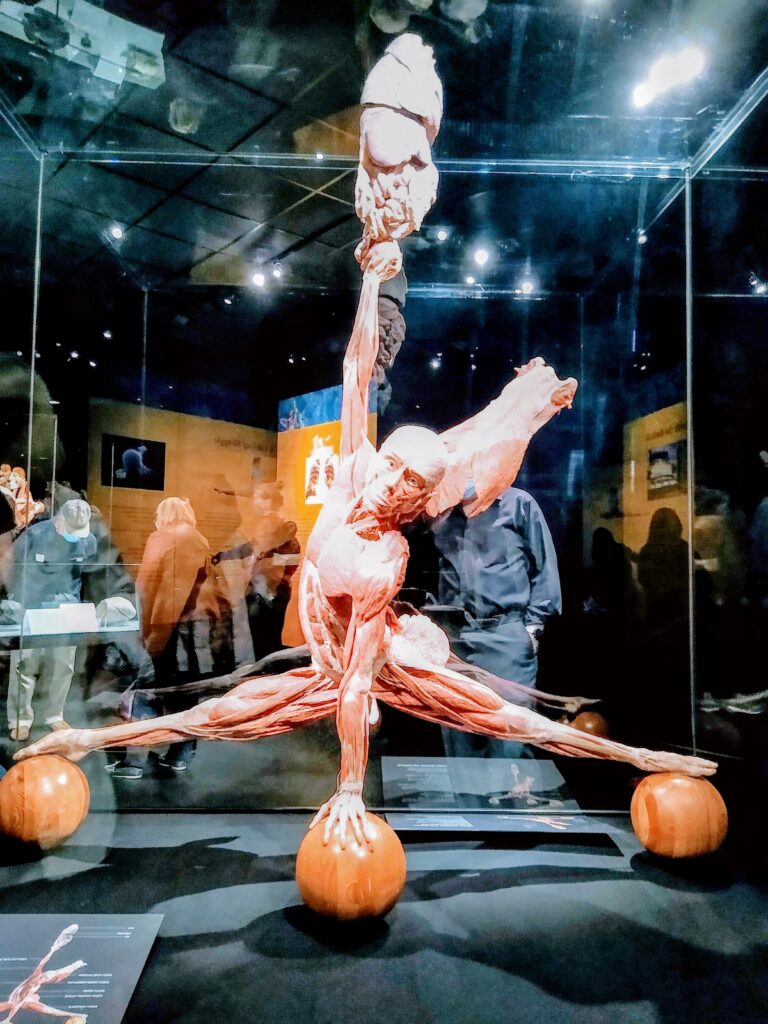
“This special exhibition puts health and wellbeing front and center,” said HMNS Curator of Anthropology Dr. Dirk VanTuerenhout. “Real remains of fellow humans, all of whom donated their bodies during their lifetimes, are on display. Plastinated organs, bones, joints and nerve networks, healthy and unhealthy, provide all visitors with a reality check and serve as a reminder to all to stay as healthy as possible, especially relevant now when health is on everyone’s mind.”
Many HMNS guests have asked when BODY WORLDS would make a return to Houston. HMNS hosted the popular exhibits in 2006 and 2008. BODY WORLDS was the most popular exhibition in the Museum’s history, seen by nearly 800,000 visitors combined and more than 50 million people internationally.
Exhibition Highlights
BODY WORLDS is the first exhibition of its kind to inform the visitor about anatomy, physiology and health by viewing real human bodies donated to the Institute for Plastination, established by Dr. von Hagens in 1983. “Dr. von Hagens originally invented plastination in 1983 as a way to teach his students about the structure of the human form,” said Dr. Whalley. “Today, BODY WORLDS & The Cycle of Lifeis the perfect way to use this science to showcase the beauty of the human body and remind us that our bodies are our personal responsibility and remain with us throughout our lives. Our bodies are fragile and vulnerable, yet resilient and forgiving. This exhibit shows that giving up unhealthy lifestyles or adopting healthy changes can make a difference at any age.”
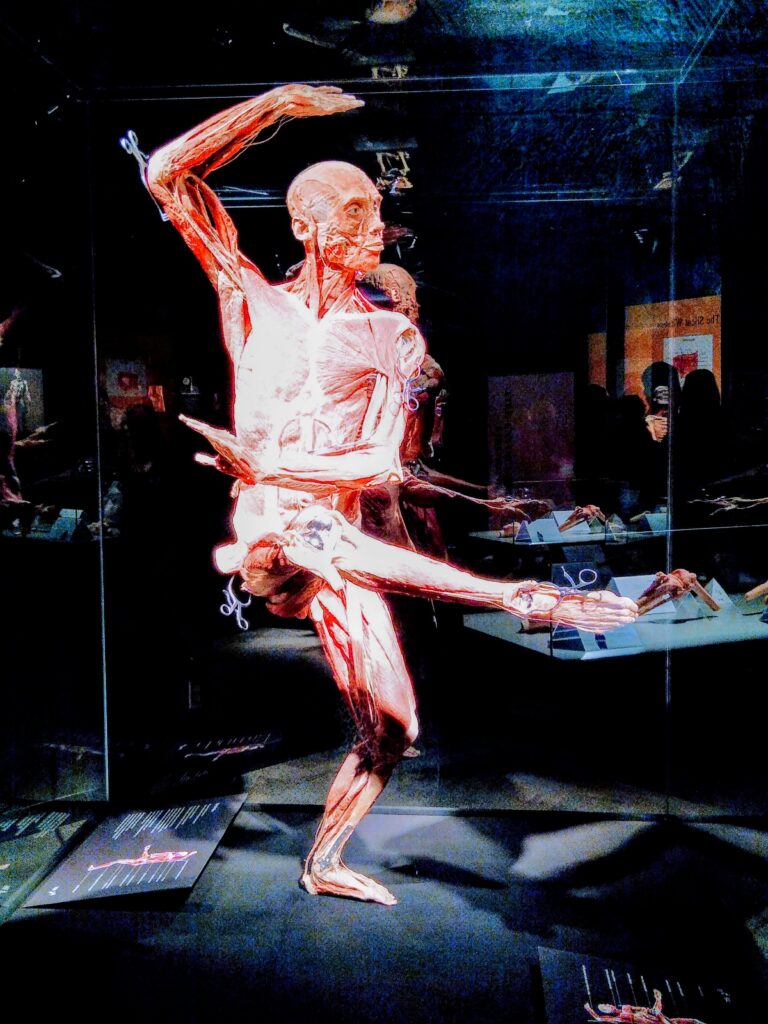
More than 100 specimens were specially curated for this exhibition. Visitors see individual organs and systems, as well as full-body plastinates in various poses including acrobats, football players, and more. Highlights of BODY WORLDS & The Cycle of Life include:
· A Heartbreaking Work of Staggering Genius– a stunning look at conception and prenatal development, which features a multimedia display on cell division and a remarkable collection of plastinates acquired from historical anatomical collections.
· The Artists’ Gaze – an exploration of the sight and vision of artists Claude Monet and Edgar Degas, who suffered from cataracts and retinal eye disease.
· Centennial Village– a feature on findings from geographic clusters around the world that are home to the longest living people on earth—from Okinawa, Japan and Ovodda in Sardinia to the Hunza region of Pakistan. These people, who defy what longevity means, have been found to share common traits and lifestyle practices that are worthy of attention.
Ticket Information:
BODY WORLDS & The Cycle of Life is on display Oct. 17, 2020 – May 31, 2021. Tickets to the exhibition will be for timed entries. Guests can purchase tickets online at www.hmns.org or in person at the HMNS Box Office or kiosks.
Admission to BODY WORLDS & The Cycle of Life is $15 for members; $30 for adults; $21 for children and seniors (60+). All tickets are for timed entry and include admission to permanent exhibit halls.
About BODY WORLDS
Invented by Dr. Gunther von Hagens in 1977, the Plastination process replaces the natural fluids in the specimen with liquid reactive plastics that are hardened and cured with gas, light or heat. Before hardening the plastic, the specimens are fixed into extraordinary, lifelike poses, illustrating how our bodies internally respond to everyday movements and activities. Plastination provides the flexibility and strength needed to display and preserve the specimens in their true-to-life form without the use of glass barriers or formaldehyde.
Dr. von Hagens’ BODY WORLDS exhibitions stem from an established body donation program that relies on donor consent. The specimens on display, excluding a small number of acquisitions from anatomical collections and anatomy programs, stem from a body donation program that was begun in 1983 by Dr. von Hagens.
Photos: V. Sweeten